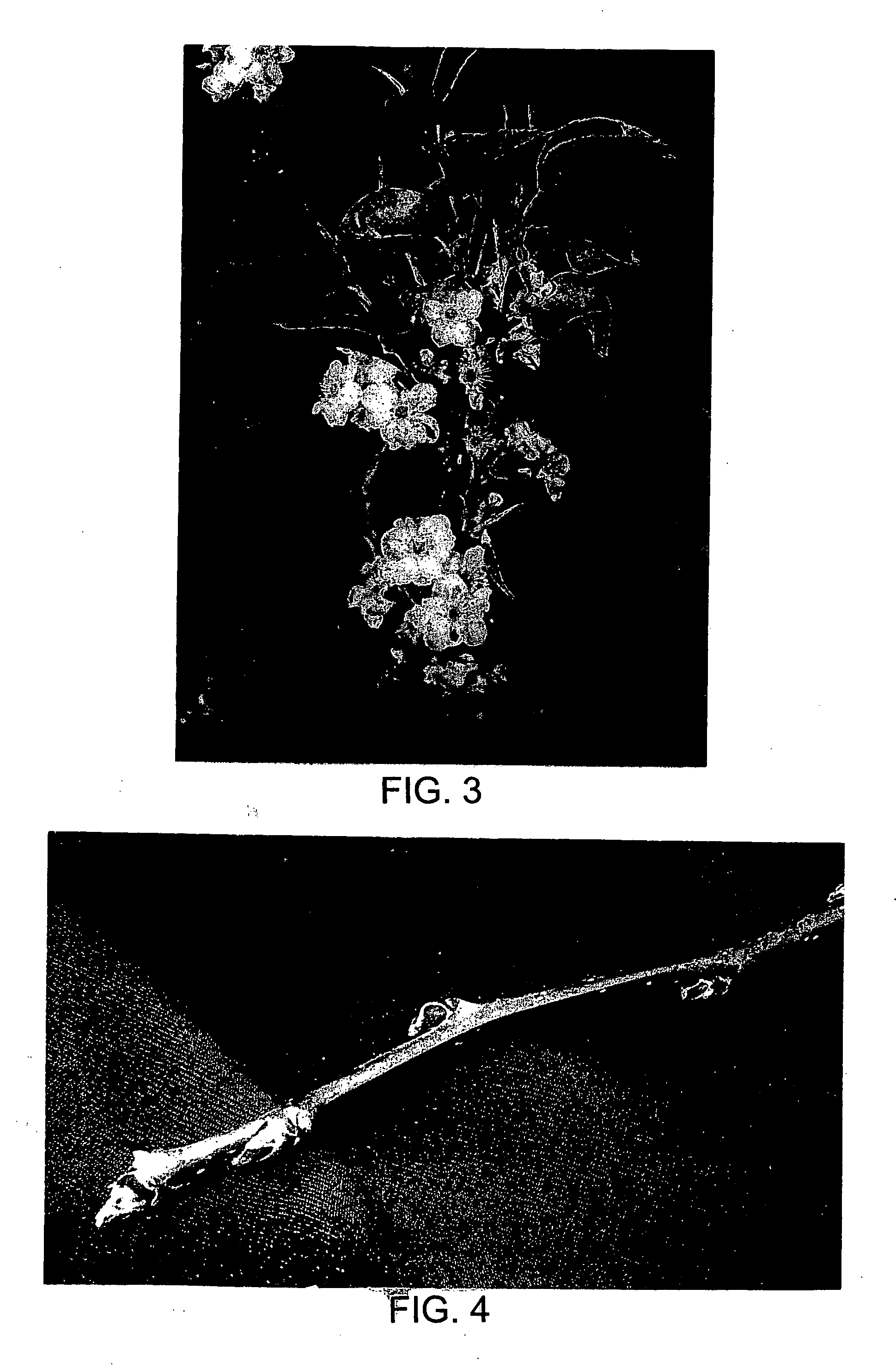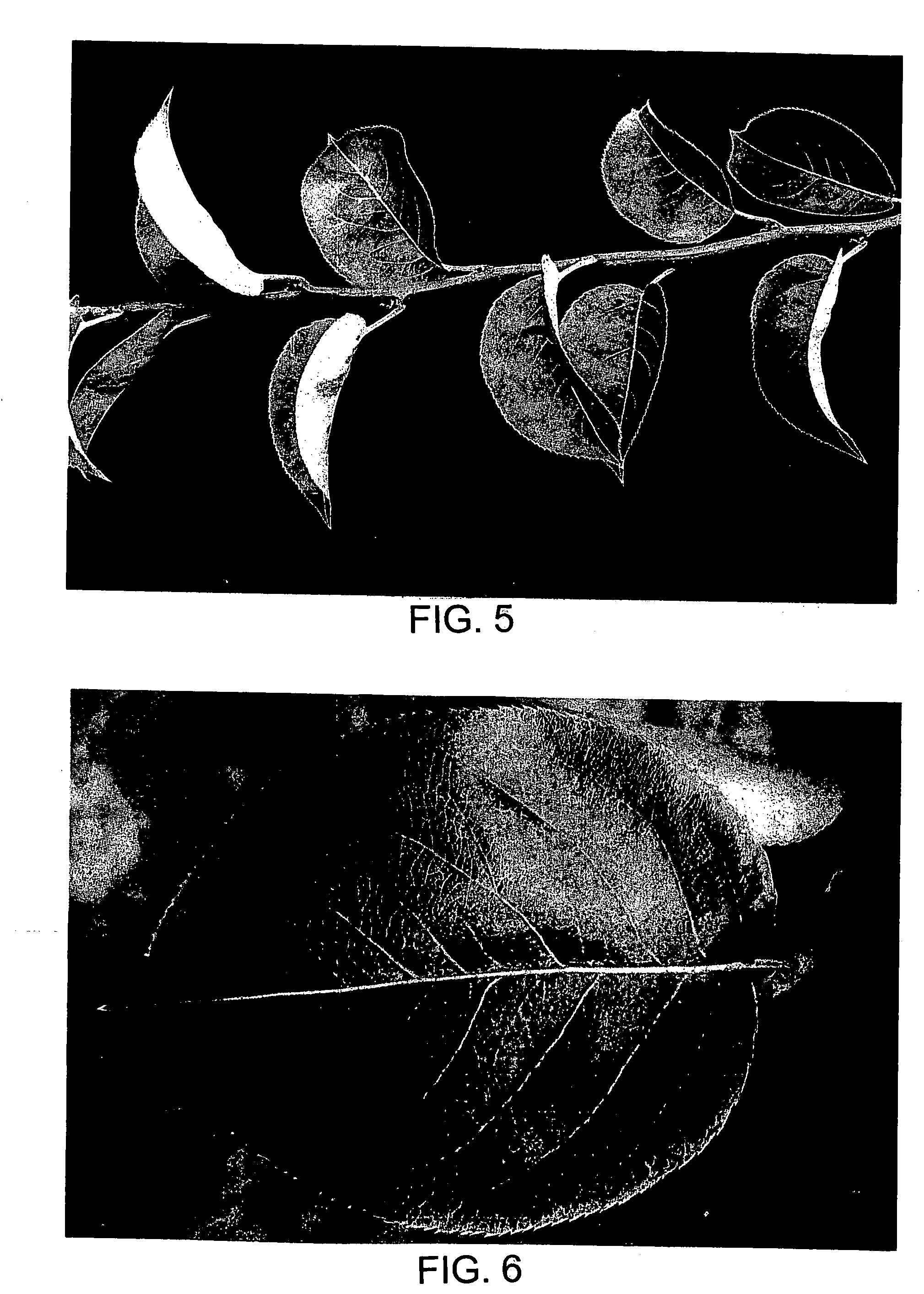Asian pear tree named 'Asio 5'
a technology of asian pear and a tree, applied in the field of asian pear tree namedasio 5', can solve the problem of not being able to identify the parent plants of the new cultivar, and achieve the effects of reducing the number of asian pear trees
- Summary
- Abstract
- Description
- Claims
- Application Information
AI Technical Summary
Benefits of technology
Problems solved by technology
Method used
Image
Examples
Embodiment Construction
[0024] The chart used in the identification of colors described herein is the R.H.S. Colour Chart of Royal Horticultural Society, London, England. When used in some instances, ordinary color terms are to be accorded their ordinary dictionary significance. The trees described were being grown at Coopersburg, Pa., U.S.A., and at Germansville, Pa., U.S.A.
TREE
[0025] Origin: Seedling of unknown parentage. [0026] Tree: [0027]Size.—Large. The original tree has been pruned to maintain a height of approximately 15 feet. Typical heights for budded trees are approximately 6 feet following planting in the field for three years, and approximately 6 to 10 feet following planting in the field for five years. [0028]Growth habit.—Vigorous and well-branched. [0029]Configuration.—Spreading. Limb spreaders can be utilized to further improve branch angles. [0030]Density.—Somewhat open (as illustrated). [0031]Hardiness.—Hardy in bud and wood. [0032]Fruit bearing.—Productive. [0033]Bearing habit.—Genera...
PUM
 Login to View More
Login to View More Abstract
Description
Claims
Application Information
 Login to View More
Login to View More - R&D
- Intellectual Property
- Life Sciences
- Materials
- Tech Scout
- Unparalleled Data Quality
- Higher Quality Content
- 60% Fewer Hallucinations
Browse by: Latest US Patents, China's latest patents, Technical Efficacy Thesaurus, Application Domain, Technology Topic, Popular Technical Reports.
© 2025 PatSnap. All rights reserved.Legal|Privacy policy|Modern Slavery Act Transparency Statement|Sitemap|About US| Contact US: help@patsnap.com



